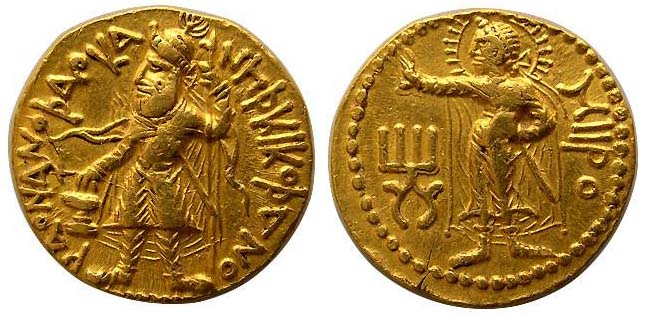


#KANISHKA COINAGE FULL#
Chalcolithic unmarked gold disc discovered from Eran have been dated to 1000 BC and due to their lack of ornamental use, it has been proposed that it was utilized as an object of money A similar gold token piece from Pandu Rajar Dhibi has also been interpreted as a coin, it is hammered on the edges and bears parallel marks, although weighing 14 grams, a quarter of the piece is missing hence its full weight of 21 grams would conform to the ancient coinage weight standards of India and confirm the vedic literary references of circulation of gold tokens in that period. The remarkable similarities between Punch marked coin symbols with those appearing in the Indus seals have also been highlighted. D.D Kosambi proposed a connection between Mohenjodaro class IV silver pieces and class D pieces with the Punch marked coins based on their remarkable similarity and identity between D-class weights. The Indus Valley civilisation may have used metals of fixed weights such as silver for trade activities which is evident from the DK area of Mohenjo Daro from the late Harappan period (dated 1900–1800 BC or 1750 BC). Origin of currency in Indian subcontinent Prehistoric and Bronze Age origins Ĭowry shells were first used in India as commodity money. 5.1.3 Token currency of Muhammad bin Tughluq.5 Late Medieval and Early Modern period (c.

2.3.2 Uninscribed Die struck coins (4th century BC).2.3.1 Saurashtra die struck coins (5th century – 4th century BC).2.1 Indian Punched mark Karshapana coins.2 Early historic period (early 1st millennium BCE – 300 BCE).1.4.1 Achaemenid coinage in northwestern India.1 Origin of currency in Indian subcontinent.


 0 kommentar(er)
0 kommentar(er)
